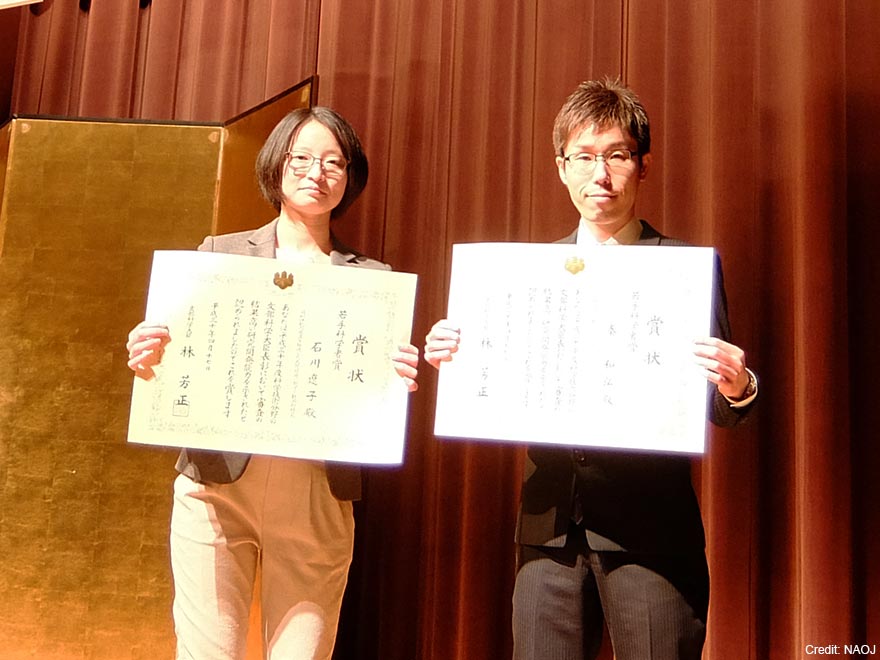Dr. Ishikawa and Dr. Hada Receive the MEXT Commendation for Science and Technology for Young Scientists
| Topics

Dr. Ryoko Ishikawa (Assistant Professor in the NAOJ Solar Science Observatory) and Dr. Kazuhiro Hada (Assistant Professor at Mizusawa VLBI Observatory) each received the Young Scientists’ Prize, in the Commendation for Science and Technology by the Minister of Education, Culture, Sports, Science and Technology (MEXT).
The theme of Dr. Ishikawa’s recognized research is “Observational Research in magnetic fields of the Sun utilizing the observational instruments launched into space.”
One of the unsolved problems in solar physics is the “coronal heating problem (Note).” Detailed observation of the solar magnetic field is required to solve this problem. Using the data from the solar observing satellite Hinode, Dr. Ishikawa discovered “transient horizontal magnetic fields (THMF’s)” existing all over the Sun. These THMF’s are generated differently from the magnetic fields in normal sunspots. She showed that the amount of energy contained in THMF’s is sufficient to account for the coronal heating. She also played a leading role in an international collaboration which succeeded in spectropolarimetric observations of ultraviolet light from the Sun’s chromosphere and transitional layer using a telescope lifted into outer space by a sounding rocket. Dr. Ishikawa’s work shows that ultraviolet spectropolarimetry is a new effective method to measure solar magnetic fields.
The theme of Dr. Hada’s recognized research is “Probing the Jets from Supermassive Black Holes with High-Resolution Radio Observations.”
Jets from supermassive black holes are massive astronomical phenomena extending far beyond the size of a galaxy. Using Very Long Baseline Interferometry (VLBI), he has researched galactic black hole jets in detail. In particular he successfully observed the black hole in Galaxy M87 with unprecedented resolution; measured the precise position of the jet base; and determined the relation between the position of the black hole and the jet which can be seen in radio waves. From detailed observations of the jet’s shape he is able to infer the mechanisms behind its acceleration and convergence.
This award, the MEXT’S Young Scientists’ Prize, is given to young researchers who have produced remarkable research achievements showing outstanding aptitude for exploratory and creative research with unique ideas. The commendation ceremony was held at MEXT (located in Chiyoda Ward, Tokyo) on April 17, 2018.
(Note) The surface temperature of the Sun is about 6,000 K. The temperature of the chromosphere above the surface is about 10,000 K, and the corona in the upper atmosphere is over 1,000,000 K. There are many unsolved questions like “Why does the temperature, which decreases from the core to the surface of the Sun, increases again to high temperatures in the upper layers of the chromosphere and corona?” and “What kind of heating mechanisms operate in the chromosphere and corona?” Collectively these questions are called the “coronal heating problem.” Back